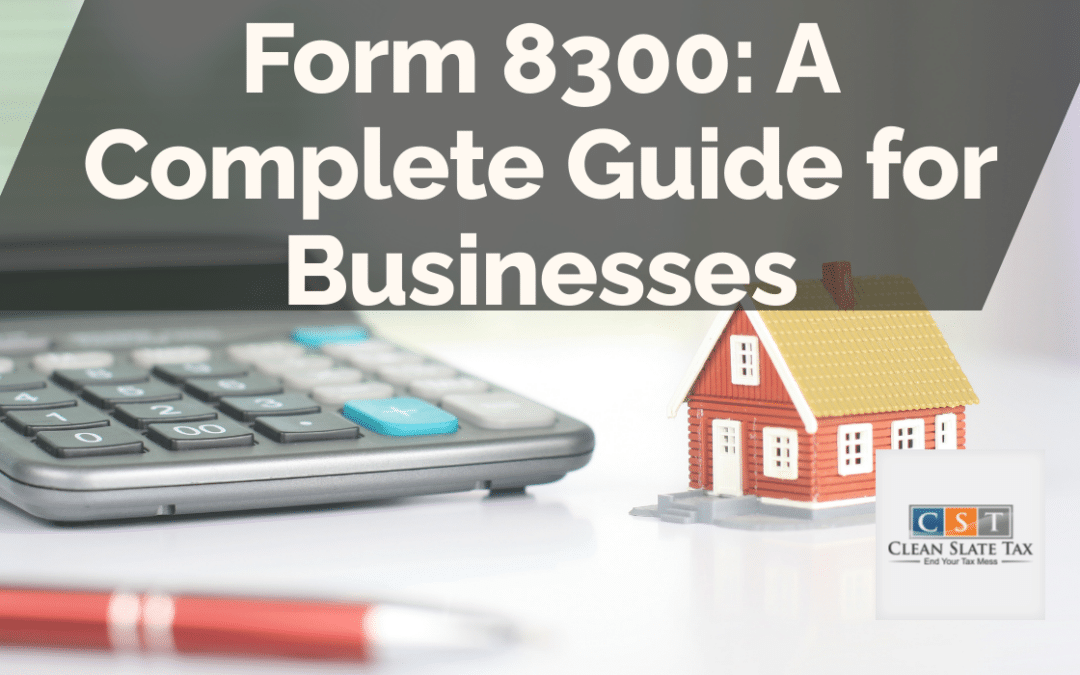Businesses often find themselves dealing with large volumes of cash transactions. While this is a common practice, it can also make a business vulnerable to money laundering schemes. The IRS has instituted Form 8300 to combat this issue, requiring businesses to report large cash transactions to the government. In this guide, we will discuss the purpose of Form 8300, who is required to fill it out, and step-by-step instructions for completing the form.
What is Form 8300?
Form 8300 is a report that businesses are required to submit to the IRS when there are cash transactions exceeding $10,000 in a single transaction or a series of related transactions. The form is used to fight against money laundering and terrorism financing by tracking cash transactions that might indicate criminal activity.
Who is Required to File Form 8300?
Form 8300 must be filed by any business that receives over $10,000 in a single transaction or multiple related transactions in the course of their trade or business. A related transaction means that any transaction, which occurs within a 24-hour period or appears to be connected to each other through a pattern or unusual circumstances.
Examples of such businesses are car dealerships, brokers, pawnbrokers, jewelry stores, and other similar businesses as well as any individual or organization involved in the distribution of drugs, guns or drug paraphernalia activity. This form cannot be filed anonymously and the individuals or businesses involved in the transactions must provide identification information along with the necessary details.
How to Fill Out Form 8300?
Form 8300 might seem intimidating, but it is straightforward and simple to complete. The details required in the form include :
- The name, address, and taxpayer identification number (TIN) of the individual or business from whom the cash was received.
- The name, address, and TIN of the individual or business receiving the cash.
- The amount of cash received and the date of the transaction.
- The nature of the transaction.
Step-by-Step Instructions for Filling Out Form 8300
- Gather the necessary information: Gather the name, address, and taxpayer identification number of both parties involved in the cash transaction.
- Fill out the top portion: Fill out the top portion of the form with your business information, including the name of the business, address, and TIN.
- State the transaction nature: In the next section, you must explain the nature of the transaction, including a description of the products or services exchanged for cash.
- Provide information of the payer: On the next section, provide the name, address, and TIN of the individual or business who paid in cash.
- Provide information of the recipient: On the following section, provide the name, address, and TIN of the individual or business receiving the cash.
- Provide transaction details: State the amount of cash received and the date of the transaction. If there were multiple related transactions, then include all the dates and amounts in this section.
- Sign and file the form: With all the required documentation gathered, sign the form, and file it with the IRS by the due date.
When to File Form 8300?
Form 8300 must be filed within 15 days of the cash payment transaction was made, or the first transaction in related transactions.
What Happens If Form 8300 is Not Filed?
Failure to file Form 8300 can result in severe penalties for businesses. A business can easily incur civil penalties of up to $25,000 for failing to file Form 8300 or inaccurate filing. In addition, willful failure to file Form 8300 or filing incomplete or inaccurate information knowingly is subject to criminal charges and can lead to imprisonment and a $250,000 fine.
Frequently Asked Questions
What are related transactions?
Related transactions are transactions that occur within 24 hours or appear to be connected by a pattern of unusual circumstances. When multiple transactions are related, they are considered as a single transaction exceeding $10,000 and should be reported on Form 8300.
Are credit card transactions required to be reported?
No, business must report transactions with only cash involved, bank drafts, cashier’s checks, and money orders. Business cannot avoid filing Form 8300 by receiving cashier’s checks, bank drafts, or money orders instead of cash.
What if the business receives the payment in installments?
If the business receives the total amount of $10,000 or more in cash or related transactions in a 12-month period, it needs to file Form 8300. Include the dates and amounts of each cash payment received in installment in Part II of the form.
We hope this complete guide on Form 8300 helps you understand its purpose and the filling process. Remember, compliance with Form 8300 can help you protect your business against transactions that could harm your reputation, finances, and safety.





